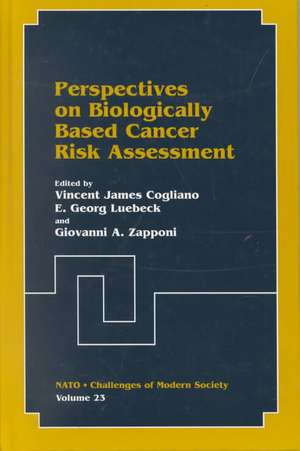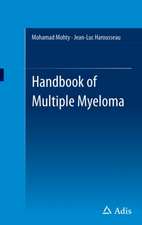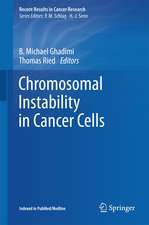Perspectives on Biologically Based Cancer Risk Assessment: Nato - Challenges of Modern Society, cartea 23
Editat de Vincent James Cogliano, E. Georg Luebeck, Giovanni A. Zapponien Limba Engleză Hardback – 31 iul 1999
| Toate formatele și edițiile | Preț | Express |
|---|---|---|
| Paperback (1) | 950.33 lei 6-8 săpt. | |
| Springer Us – 25 sep 2012 | 950.33 lei 6-8 săpt. | |
| Hardback (1) | 957.75 lei 6-8 săpt. | |
| Springer Us – 31 iul 1999 | 957.75 lei 6-8 săpt. |
Din seria Nato - Challenges of Modern Society
-
 Preț: 401.03 lei
Preț: 401.03 lei -
 Preț: 421.05 lei
Preț: 421.05 lei - 18%
 Preț: 1246.63 lei
Preț: 1246.63 lei -
 Preț: 388.34 lei
Preț: 388.34 lei - 5%
 Preț: 365.10 lei
Preț: 365.10 lei - 18%
 Preț: 1257.83 lei
Preț: 1257.83 lei - 5%
 Preț: 406.94 lei
Preț: 406.94 lei - 18%
 Preț: 1258.46 lei
Preț: 1258.46 lei -
 Preț: 418.32 lei
Preț: 418.32 lei - 5%
 Preț: 1418.48 lei
Preț: 1418.48 lei - 18%
 Preț: 953.20 lei
Preț: 953.20 lei -
 Preț: 379.68 lei
Preț: 379.68 lei -
 Preț: 418.76 lei
Preț: 418.76 lei - 18%
 Preț: 1249.14 lei
Preț: 1249.14 lei -
 Preț: 434.34 lei
Preț: 434.34 lei -
 Preț: 398.15 lei
Preț: 398.15 lei -
 Preț: 424.15 lei
Preț: 424.15 lei -
 Preț: 405.66 lei
Preț: 405.66 lei -
 Preț: 430.69 lei
Preț: 430.69 lei -
 Preț: 430.47 lei
Preț: 430.47 lei -
 Preț: 391.99 lei
Preț: 391.99 lei
Preț: 957.75 lei
Preț vechi: 1167.99 lei
-18% Nou
Puncte Express: 1437
Preț estimativ în valută:
183.26€ • 190.97$ • 151.74£
183.26€ • 190.97$ • 151.74£
Carte tipărită la comandă
Livrare economică 03-17 aprilie
Preluare comenzi: 021 569.72.76
Specificații
ISBN-13: 9780306461088
ISBN-10: 0306461080
Pagini: 319
Ilustrații: XIII, 319 p.
Dimensiuni: 178 x 254 x 19 mm
Greutate: 0.8 kg
Ediția:1999
Editura: Springer Us
Colecția Springer
Seria Nato - Challenges of Modern Society
Locul publicării:New York, NY, United States
ISBN-10: 0306461080
Pagini: 319
Ilustrații: XIII, 319 p.
Dimensiuni: 178 x 254 x 19 mm
Greutate: 0.8 kg
Ediția:1999
Editura: Springer Us
Colecția Springer
Seria Nato - Challenges of Modern Society
Locul publicării:New York, NY, United States
Public țintă
ResearchCuprins
1. Introduction.- 1.1. Dose-Response Assessment in Nato Countries.- 1.2. Future Directions in Dose-Response Assessment.- 1.3. Brief Considerations on Some Commonly Used Parameters.- 1.4. Structure of this Report.- 1.5. References.- 2. The Biological Basis of Cancer.- 2.1. Introduction.- 2.2. Cell Proliferation.- 2.3. Cell Proliferation and Mutation.- 2.4. Differences in Susceptibility.- 2.5. Mechanisms of Inhibition in Mutagenesis and Carcinogenesis.- 2.6. References.- 3. Sources of Data For Cancer Risk Assessment.- 3.1. Introduction.- 3.2. In Vitro and Short Term Testing.- 3.3. Trends in Animal Toxicology Testing.- 3.4. Cell Proliferation.- 3.5. Sources of Toxicokinetic Data.- 3.6. Inter- and Intra-Species Variability.- 3.7. References.- 4. Use of Biochemical and Molecular Biomarkers For Cancer Risk Assessment in Humans.- 4.1. Introduction.- 4.2. The Initiatory Complex and its Modulators.- 4.3. The Determinants of the Clonal Expansion of the Initiated Cells.- 4.4. Adjuvant Determinants of the Clonal Expansion.- 4.5. Conclusion.- 4.6. Acknowledgments.- 4.7. References.- 5. The Multistage Model of Carcinogenesis: A Critical Review of its Use.- 5.1. Introduction.- 5.2. Historical Antecedents of the Multistage Model.- 5.3. The Armitage-Doll Multistage Model.- 5.4. Derivation, Rationale and Mathematical Form of the Model.- 5.5. The “Linearized Multistage Model”.- 5.6. Time-Dependent Non-Constant Exposure Patterns: Their Influence on Multistage-Derived Risk Estimates.- 5.7. Consideration of Pharmakokinetics in Multistage Modeling.- 5.8. The Problem of Multiple Exposure: Multistage Carcinogenesis Theory and Additive and Multiplicative Models.- 5.9. Critical Review of the Model.- 5.10. Discussion.- 5.11. References.- 6. Biologically Based Models of Carcinogenesis.- 6.1.Introduction.- 6.2. A Brief History of Biologically-Based Cancer Models.- 6.3. Two-Mutation Clonal Expansion Model.- 6.4. Modes of Action of Carcinogens.- 6.5. Quantitative Formulation of the Model.- 6.6. Likelihood Construction and Estimation.- 6.7. Quantitative Analysis of Intermediate Lesions.- 6.8. Toxicokinetics in Biologically Based Risk Assessment.- 6.9. Interspecies Extrapolation.- 6.10. Implications for Low-Dose Extrapolation.- 6.11. References.- 7. Statistical Issues in the Application of Multistage and Biologically Based Models.- 7.1. Introduction.- 7.2. Characterization Of Models.- 7.3. Statistical Inference.- 7.4. Design Considerations for Low-Dose Problems.- 7.5. Sensitivity Analysis and Physiologically Based Toxicokinetic Modeling.- 7.6. Discussion.- 7.7. References.- 8. Informative Case Studies.- 8.1. Radon, Cigarette Smoke, and Lung Cancer: The Colorado Plateau Uranium Miners’ Cohort.- 8.2. Modeling Colon Cancer.- 8.3. Quantitative Analysis of Enzyme Altered Foci (EAF).- 8.4. The Role of Cell Proliferation in Urinary Bladder Carcinogenesis.- 8.5. N-Nitrosomorpholine: Comparison of Multistage Model and Two-Event Clonal Expansion Model.- 8.6. Calculation of Tetrachloroethylene Risk Estimates.- 8.7. Considerations for Benzene Toxicokinetic Extrapolation.- 8.8. References.- 8.9. Appendix A.- 9. Conclusions and Recommendations.- 9.1. Introduction.- 9.2. What does Each Source of Experimental Data Contribute to our Knowledge and Ability to Model?.- 9.3. What Kinds of Information are Needed to Develop a Biologically Based Model?.- 9.4. How does Linearity Enter into Empirical Models and Biologically Based Models?.- 9.5. How does a Biologically Based Model Help Us Understand Intraspecies Variability?.- 9.6. How Ddoes a Biologically Based Model Help UsUnderstand Interspecies Variability?.- 9.7. What are the Uncertainties Associated with a Biologically Based Model?.- Contributors.
















